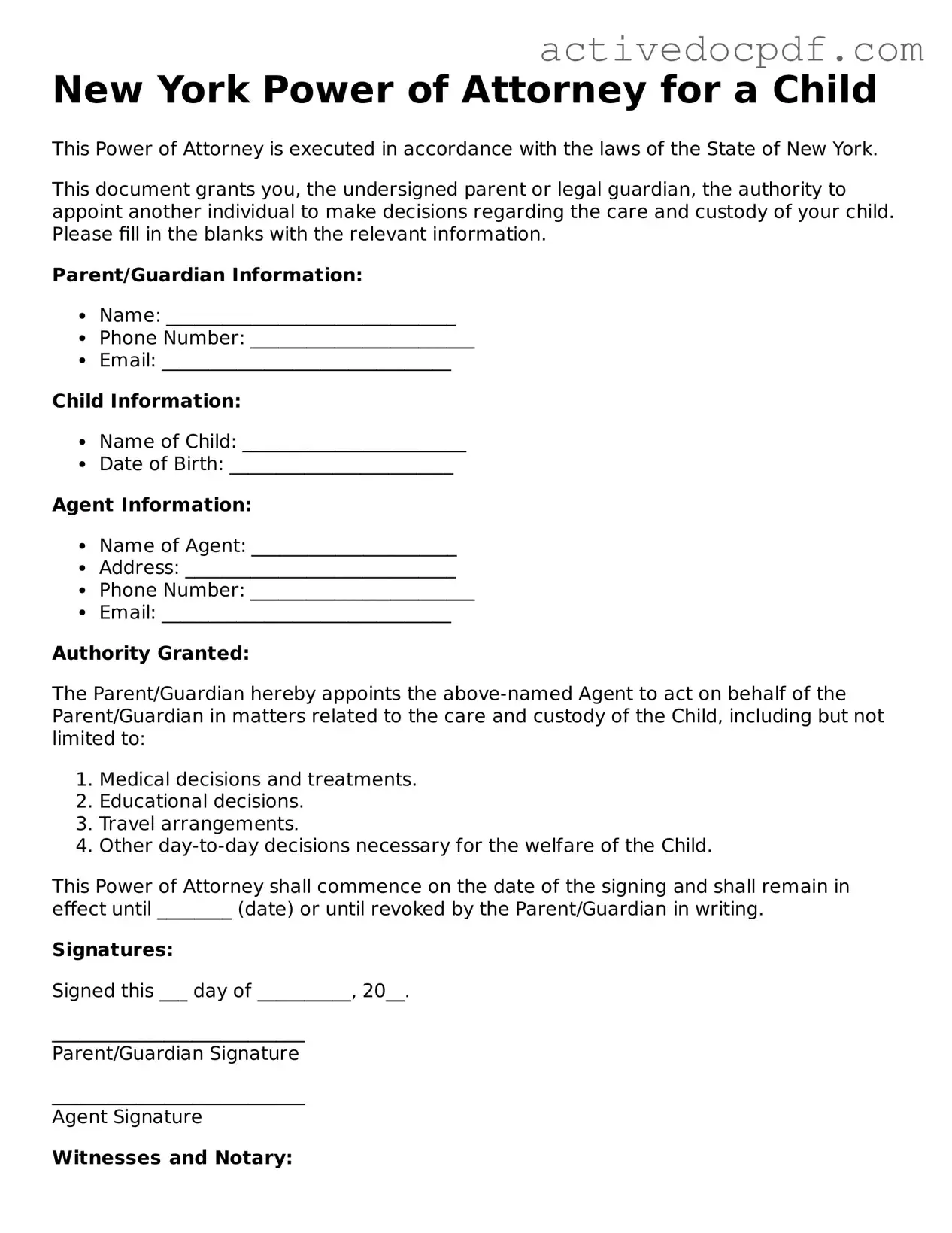What is a Power of Attorney for a Child in New York?
A Power of Attorney for a Child in New York is a legal document that allows a parent or legal guardian to designate another adult to make decisions on behalf of their child. This arrangement is often used when the parent or guardian will be unavailable for an extended period, such as during travel or military service. The appointed individual can make decisions regarding the child's education, healthcare, and general welfare.
Who can serve as an agent in a Power of Attorney for a Child?
The agent, or the person designated to act on behalf of the child, must be an adult. This individual can be a family member, friend, or any trusted adult who is willing to take on the responsibility. It is crucial to choose someone who is reliable and understands the needs of the child.
How long is a Power of Attorney for a Child valid?
The Power of Attorney for a Child remains valid until the specified expiration date outlined in the document or until the parent or guardian revokes it. If no expiration date is provided, it generally lasts until the child reaches the age of 18. However, parents may choose to revoke the document at any time if circumstances change.
What decisions can the agent make on behalf of the child?
The agent can make a variety of decisions related to the child's daily life. These may include:
-
Enrollment in school or childcare programs
-
Medical decisions, including consent for treatment
-
Participation in extracurricular activities
-
Travel arrangements
However, the agent cannot make decisions that require parental consent under New York law, such as certain legal matters or changes in custody.
Is a Power of Attorney for a Child required to be notarized?
Yes, in New York, the Power of Attorney for a Child must be signed in the presence of a notary public. This notarization serves as a verification of the identities of the parties involved and ensures that the document is legally binding. It is advisable to keep a copy of the notarized document for personal records.
Can a Power of Attorney for a Child be revoked?
Yes, a Power of Attorney for a Child can be revoked at any time by the parent or legal guardian. To do this, the parent should provide written notice to the agent and any relevant institutions, such as schools or healthcare providers. It is also recommended to complete a formal revocation document to ensure clarity and legal standing.
What should be considered before creating a Power of Attorney for a Child?
Before creating a Power of Attorney for a Child, several factors should be considered:
-
Trustworthiness of the appointed agent
-
Specific powers to be granted
-
Duration of the arrangement
-
Impact on the child's welfare and stability
Consulting with a legal professional may provide further guidance and ensure that the document aligns with the family's needs and legal requirements.
